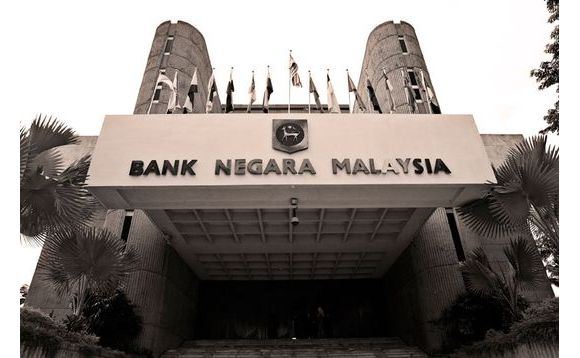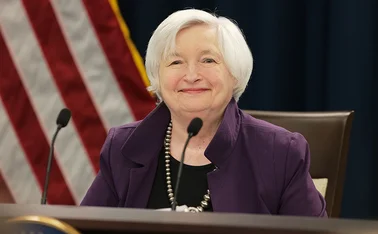
Zeti Akhtar Aziz on crisis management, mandates and capacity building
Bank Negara Malaysia governor shares insights gained after more than 15 years at the helm
You have experienced three major crises: You were in London when sterling was forced out of the exchange rate mechanism (ERM): you were a major actor during the Asian financial crisis; and you experienced the repercussions from the global financial crisis. What did you learn about currency regimes, and has that informed your view about a common Asian currency?
Currencies must reflect underlying fundamentals over the medium term. If a country pursues either an overvalued or undervalued currency, it will not be sustainable for any lengthy period of time. There will be a moment when the currency will just give way. A very important lesson is to recognise that sustaining currency levels at values that do not reflect underlying fundamentals will lead to highly destabilising consequences. In the case of sterling, it eventually led it to being forced out of the ERM. During the Asian crisis, we saw currencies that were overvalued – and when there were also vulnerabilities, such as the formation of asset bubbles, current-account deficits or high foreign indebtedness. These elements become triggers that can destabilise the currency. A strategy adopted by Europe was to introduce a single currency, and the currencies previously that faced significant instability are now highly stable by being part of the euro. In Asia, this is not something we will pursue. We did a study in the early 2000s, and we recognised we are one of the most diverse regions in the world, and it would be too costly for us to try to meet the preconditions for a single currency. Therefore, we have decided to pursue financial integration.
Why do you want to pursue financial integration when you already have a relatively high level of economic integration?
We are already trading significantly with each other. For Malaysia, 60% of our trade is with Asia. The main reason we want greater financial integration is to better intermediate the savings of the region. Most Asian economies have high levels of savings. What do we do with these savings? We invest them in the developed world, and then some of it comes back to us in terms of volatile capital flows. We want the financial infrastructure in place in our region that will allow some of these savings to be reinvested and recycled back to our region via investment projects, infrastructure projects and so on. That is what we have decided to do.
In late August 1998, you were made acting governor of Bank Negara Malaysia and subsequently introduced exchange controls. Can you explain the specific circumstances behind your appointment and why you took the actions you did, rejecting the advice from the International Monetary Fund and others?
At that time, I was chief economist and assistant governor for reserve management, money markets and foreign exchange operations at the bank. During the crisis, which started more than a year earlier, in May of 1997, Malaysia's prime minister, Mahathir Mohamad, had established an ‘economic council' that met every day. Frequently I was called to the council to give my assessment of the economic situation and the policies that were being proposed. At the height of the crisis, Mahathir proposed wide-ranging foreign exchange controls – controls on everyone: on businesses, on households, on foreign investors. The council discussed these controls for three months, and one member gave 33 reasons why they should not be implemented – as they would lead to utter devastation to the country. At the peak of the crisis, after the currency had already depreciated more than 30%, Bank Negara Malaysia's governor resigned, giving 24 hours' notice. The deputy governor's contract had completed and he didn't want to renew it, so they both stepped out at the same time. That was when I was called by Mahathir to be acting governor.
Zeti Akhtar Aziz took on the role of governor of Bank Negara Malaysia in 2000 after being appointed acting governor at the height of the Asian financial crisis in 1998. She started her career as an economic analyst at the South East Asian Central Banks Research and Training Centre in 1979 before being made a deputy manager in the economics department at Bank Negara Malaysia in 1984. She was named a chief representative for the central bank’s London representative office in 1989, returning as chief economist in 1994 and as assistant governor for economics and reserve management in 1995 before being appointed deputy governor in 1998. She holds a degree in economics from University of Malaya and a PhD in monetary and international economics from the University of Pennsylvania.
How did you steer Mahathir away from the abyss?
What was very important – and this is something that I believe is very, very important in central banking – is that whenever you implement a policy, you must have great clarity in the objective you want to achieve. What I did stress to Mahathir was that it was predominantly the speculators that were causing the currency to depreciate – wave after wave. Although some had written that we had capital flight and so on, that was not true. Rationality did prevail, and he recognised that only two of the control measures that were being proposed needed to be implemented. Therefore, this is what we focused on, and that was how it came about. The first measure was the non-internationalisation of our currency, and the second was a 12-month minimum holding period. Implementation of these two measures saw stability in the financial markets in Malaysia being restored. We were able to implement many policies – including the restructuring and rationalisation of our banking sector that resumed credit flows – and within six months, we had 6% economic growth, so we had a ‘V-shaped recovery'.

The whole world had turned against us. We did not have a single friend after we introduced the controls. Very articulate individuals, including the managing director of the IMF, condemned us. But less than a year later, in May of 1999, Malaysia decided to tap the international market and raise funds. Our intention initially was to raise $2 billion. We had two teams. The first team covered Asia, Europe and London. The other team – including me – covered the US, from coast to coast. I flew in a little Falcon jet with five other people, and within 10 days, we had 26 meetings, speaking to investors and telling our story. The rating agencies had earlier in 1998 cut our ratings by two notches, so it was very important for us to go directly to the investors. Just before the two teams met in New York to do the pricing, Federal Reserve chair Alan Greenspan announced a bias towards tightening, and there were unfavourable developments in Argentina. Spreads started widening, and we had to discuss with our minister on whether we would abort, defer or scale back the issuance. My advice was that we had had such a positive response that we should proceed and scale back the issuance to $1 billion. The issuance was highly successful. The pricing was within our range, and it was oversubscribed by three-and-a-half times. That was a major turning point, and we became better understood – at least, by the investors from around the world.
India and Turkey have both had some success in more recent years raising interest rates to restrict outflows. Could you have taken a different route to that of exchange controls?
 No. First of all, many strategies can achieve the same outcome, and it is for the countries concerned to make that assessment. Some, including US economist Paul Krugman, said that Malaysia recovered at the same time other countries in Asia did, so did not need to implement the unconventional measures that we did. Indeed, we did recover at the same time as the others. But there was one very big difference for Malaysia: the cost of the crisis. When we did the calculation, our cost from the crisis – including costs to taxpayers, shareholders, workers, etc – was less than 3% of GDP. Surely that matters? When you use interest rates and raise them very sharply, there is a cost to the economy. So it is a judgement call. At that time, Malaysia had quite strong initial conditions and fundamentals, and our banking sector was not under significant stress. This allowed us to use the measures that we did to restore stability and prepare the conditions for recovery to happen.
No. First of all, many strategies can achieve the same outcome, and it is for the countries concerned to make that assessment. Some, including US economist Paul Krugman, said that Malaysia recovered at the same time other countries in Asia did, so did not need to implement the unconventional measures that we did. Indeed, we did recover at the same time as the others. But there was one very big difference for Malaysia: the cost of the crisis. When we did the calculation, our cost from the crisis – including costs to taxpayers, shareholders, workers, etc – was less than 3% of GDP. Surely that matters? When you use interest rates and raise them very sharply, there is a cost to the economy. So it is a judgement call. At that time, Malaysia had quite strong initial conditions and fundamentals, and our banking sector was not under significant stress. This allowed us to use the measures that we did to restore stability and prepare the conditions for recovery to happen.
When you look at the most recent crisis, what are the key policy responses that have worked and those that have not?
There definitely has been an over-reliance on monetary policy to do the job. I believe one of the important lessons is the need for a comprehensive and optimal policy mix. There cannot be an over-reliance on monetary policy. Otherwise, this will result in a very prolonged period of highly accommodative monetary policy, as inertia sets in for other policies to be implemented.
How did you set about restructuring the Malaysian financial system to create a vibrant bond market and banks that are now major intermediaries in the region?
It was systematic. We had a blueprint, a plan, and it involved strengthening our financial intermediaries, in particular the banking sector. We restructured, re-rationalised and recapitalised the banks. We also removed management and boards, and really subjected financial institutions to achieving certain benchmarks in every aspect of the functioning of the banking sector. Then we recognised we were a highly bank-centric system and we needed to diversify by systematically developing the bond market into what has now become the largest in South-east Asia. The bond market value used to represent around 35% of GDP, and now it is 110% of GDP. We have a full range of instruments and maturities of up to 30 years. Now, 40% of the participants that hold our domestic paper are non-residents. This prompted the Bank for International Settlements to ask in the event of a sell-off by the foreigners would it not cause the bond market to collapse.
In recognition of this risk, we focused on building up domestic institutional investors by developing pension funds, the insurance industry and the asset management business. They have become major players in the bond market. These asset management funds have developed to such an extent that they can step in when there is a reversal of capital flows and a sell-off by foreigners. As a result, yields have not moved too much during such reversals in capital flows. That was a very important step. We also strengthened our regulatory and supervisory oversight of the financial system. We never had a light-touch approach, and adopted a highly intrusive supervisory oversight function.
What are the most important steps one needs to take when building capacity at a central bank?
We recognised that we not only had to transform and reinvent the financial sector, but also the bank itself so that we strengthen our organisational effectiveness. We started off becoming more strategically focused, knowing what outcomes we wanted the organisation to achieve and having the whole bank aligned to that. No longer did we operate in silos, in each department or section. We worked cross-functionally for almost everything that we did. Everyone from different parts of the bank had to have an input for an outcome that the bank wanted to achieve, whether it was for financial stability, financial intermediation or monetary stability. Then we leveraged a more effective technology framework and systems to better manage the knowledge that resides in the institution and the greater investment in people.
I have never looked at the gender issue. When I was part of senior management, I was the only woman, but now 40% of my senior management are women. When I ask myself "What did I do?", actually I didn't do anything. All I did was to give the opportunity for people to improve themselves and everybody took advantage of it, including the women. So investing in people has been vital. It raises the energy levels and the contribution of people in the organisation in a way that we become an organisation that is best able to serve the country.
If you have accommodated monetary policy and you want to bring about economic growth in your recovery, you really need greater participation in consumption demand, in the small and medium-sized enterprise sector, which is a major source of employment
You've placed a lot of focus on financial inclusion. Some central bankers say it is a noble aim, but does not need to be part of a central bank's core mandate. How do you respond?
Fifty years after our central bank existed, we decided to rewrite our Central Banking Act. In it, one of our mandates is to develop what we first termed a ‘progressive financial system', but I later changed it to a ‘progressive and inclusive financial system'. The motivation for this is actually to achieve balanced growth, because growth where one part of the economy is racing ahead and the other gets left behind is not sustainable. It can be highly destabilising. The second motivation is that we want more effective participation in the financial system. It is not just bringing those underserved into the financial mainstream, but also for income earning people that perhaps just have a deposit account or a housing loan to enhance their wellbeing by participating more effectively in the financial system. That is what we mean when we speak of financial inclusion. Does that make us lose focus on our primary mandate of monetary and financial stability? I do not think so. It actually enhances it. If you have accommodative monetary policy and you want to bring about economic growth in your recovery, you really need greater household consumption demand, and greater participation by small and medium-sized enterprises, which are a major source of employment, and so on. If you give greater access to participation by these communities in the financial system, you can contribute towards reinforcing monetary policy and the transmission mechanism as well.
Malaysia has become a major financial centre for Islamic finance, and you have supported the creation of a wide range of Islamic finance facilities. Are you happy with the progress that's been made?
When I became governor in the year 2000, I created a department for Islamic finance by centralising the activities already being carried out in other departments, such as banking, insurance, money market operations and so on. Islamic finance has inherent qualities that are attractive to me. Every financial transaction must have an underlying economic transaction and is based on profit-sharing, which also means the risk must be shared. Explicitly, there's risk management and governance, and since there are contracts involved between the lender and the borrower, there is therefore transparency and disclosure. In the year 2000, Islamic finance accounted for 6% of our banking sector. Now, 16 years later, it accounts for 27%. Many people think Islamic finance is for Muslims. On the contrary, Malaysia is a multi-racial and multi-religious community. If you ask our largest banks about the percentage of non-Muslims that participate in the market, they will tell you 60–70% are non-Muslims. They just look at the product offerings, and whether they are competitively priced. Malaysia has a comprehensive Islamic financial system that operates side by side with conventional finance. Islamic bonds, called sukuk, represent 50% of our bond market, and have been issued by European and Japanese corporations to finance activities in other parts of the world. We also have multi-currency sukuk issued out of our market, including in renminbi.
Do you believe the model of an operationally independent central bank pursuing a price-stability target combined with a financial-stability mandate will be fit for purpose in the future?
Definitely! The primary mandate is monetary and financial stability, but for an emerging market country, the role of the central bank has to be even broader, as they have a very important role in developing the financial system. They also have an important role in driving financial reforms, and they have an important role in driving education in the financial sector as well. This is to really ensure that the workforce in the financial sector is able to improve and advance. If you leave it to the financial sector to do it themselves, they're not going to do it in the same way. Sometimes the central bank has to be a catalyst.
 In that case, how do you perform appropriate ‘boundary management'?
In that case, how do you perform appropriate ‘boundary management'?
Boundary management is very important for central bankers. This is especially the case in emerging economies, as the central bank often has the greatest expertise under one roof. The government does also have high-calibre people, but they get moved from ministry to ministry – while at the central bank, they remain. We also have resources to send employees to study all over the world attending programmes that are very useful. There is always tremendous capacity building for the workforce of central banks. We are therefore called upon to do many things that are beyond our mandate. For example, we were requested to help develop SMEs, and so on. It requires boundary management. You need to identify with great clarity what outcome is required, then the scope of what you are really going to do, and then sign off when it is done, so that it doesn't remain as a permanent part of what the central bank will be required to do. That is how we manage it. We may do a number of services that are in the national interest that may be indirectly related to our mandates, but that are important because they reinforce the potential for our mandates to succeed.
One area you believe should be core is macro-prudential supervision – something Germany has rejected, for example. Why are you so convinced that it should sit at the heart of the central bank?
Firstly, the central bank is the lender of last resort. We have to make an assessment when we provide liquidity that institutions that receive emergency support lines are viable. Who makes the assessment? It's the central bank. We do the viability test. We do the stress test. We are the ones that know or are in a position to know whether they should be supported or unwound. Therefore, it is very important that the supervisory oversight remains with the central bank so we can make that assessment.
During crisis, that kind of assessment is made throughout the day, in the morning, in the middle of the day and at the end of the day, on whether the liquidity lines should be provided. If another agency had that information, it would be very difficult to make swift and correct decisions. The governance structure is, however, critical so as to prevent a conflict of interest. You have the monetary policy committee, you have the statement that is made after meetings and you have the minutes, which shows how decisions are made regarding monetary policy. It addresses the issue of conflict of interest. It is the same thing for the financial stability committee. An assessment is made of the risks to financial stability. In each case, there is no forbearance as all the checks and balances are there, and the governance process and the accountability is there. Therefore, I believe they can coexist in the central bank.
Are unconventional monetary policies, such as quantitative easing and negative interest rates, in danger of becoming ‘conventional'?
Unconventional policies are usually implemented during extreme conditions, and if those extreme conditions are no longer prevailing, it's very important to exit, so that they don't become permanent – you want to have these unconventional tools to use again if such extreme conditions re-emerge. I have always believed exit is important. In Malaysia's case, we did exit from those controls 12 months later, and this was very important. We had restored stability, we had achieved a recovery in growth, and therefore we exited. The longer you are in that position, the harder it gets, and the adjustment need may become more significant. Therefore, my own assessment is that it is vital not to allow those unconventional policies to turn into conventional policies.
Commenting on the Asian financial crisis, you said Thailand had suffered property price declines and falling equity values, yet people still did not seem to fully realise these developments heralded the unfolding of a major regional financial crisis. One could say the same of China now. What is the difference?
The conditions in China are very different from what we saw in Thailand. What is happening in their financial markets isn't in any way near to that of crisis countries. For example, the financial markets' correction doesn't reflect the underlying fundamentals. China also has growth and it has a current account surplus. Its foreign debt is low. The banking sector – at least, the regulated banking sector – is not fragile. It's quite sound. China has already implemented policies to rein in excesses. It also has policies in place to rebalance China's economy, and is undertaking this transformation from a starting position of growth. In addition, China's stock market is retail-based, and its markets are also more segmented. Therefore, you are not going to have an interconnected destabilisation in its financial system. I'm optimistic that the developments that are happening in China are a reflection of the adjustments and rebalancing that China has initiated, including the financial reforms, and this will make for stronger foundations on which the country will have a more sustainable performance over the medium term.
The transcript of this interview is based on a 'fireside chat' between Bank Negara Malaysia governor Zeti Akhtar Aziz and Central Banking editor-in-chief Christopher Jeffery at the Central Banking Awards on March 8 in London.
Only users who have a paid subscription or are part of a corporate subscription are able to print or copy content.
To access these options, along with all other subscription benefits, please contact info@centralbanking.com or view our subscription options here: subscriptions.centralbanking.com/subscribe
You are currently unable to print this content. Please contact info@centralbanking.com to find out more.
You are currently unable to copy this content. Please contact info@centralbanking.com to find out more.
Copyright Infopro Digital Limited. All rights reserved.
As outlined in our terms and conditions, https://www.infopro-digital.com/terms-and-conditions/subscriptions/ (point 2.4), printing is limited to a single copy.
If you would like to purchase additional rights please email info@centralbanking.com test test test
Copyright Infopro Digital Limited. All rights reserved.
You may share this content using our article tools. As outlined in our terms and conditions, https://www.infopro-digital.com/terms-and-conditions/subscriptions/ (clause 2.4), an Authorised User may only make one copy of the materials for their own personal use. You must also comply with the restrictions in clause 2.5.
If you would like to purchase additional rights please email info@centralbanking.com test test test








